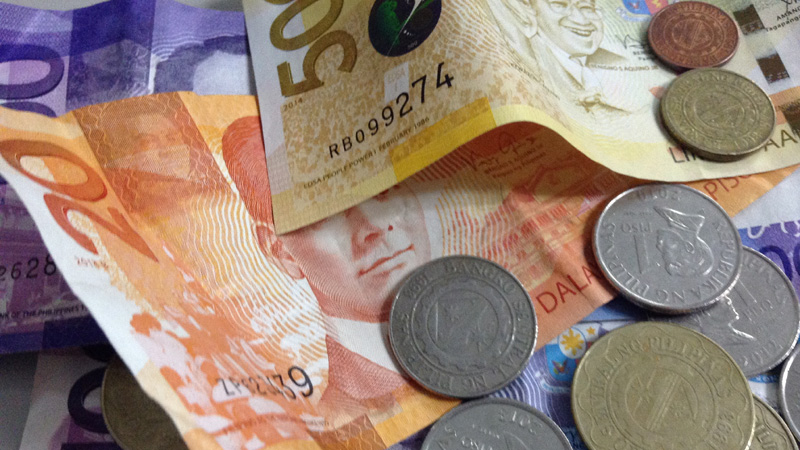Peso hits fresh 10-year low of 50.27:$1

Monday’s close remained the weakest since the P50.32:$1 rate on Sept. 26, 2006.
At the Philippine Dealing System, the peso reached an intraday low of 50.295 to $1 and a high of 50.24. The local currency opened at 50.24, weaker than last Friday’s close of 50.215.
The total volume traded dropped to $366.6 million from $415.3 million on Friday.
In a note to clients, the research arm of Metropolitan Bank and Trust Co. said it expected the peso-dollar pair to trade within the range of 50-51:$1 this week.
Last week, Metrobank Research said the peso would remain under pressure throughout this year due to “still volatile financial markets” and was seen ending the year at 51.30 to $1.
ING Bank Manila senior economist Joey Cuyegkeng said the weaker peso was partly brought about by “external factors, including President Trump’s speech tomorrow [as well as] speeches of US Federal Reserve policymakers including Fed Chair Janet Yellen and Fed Vice Chair Stanley Fischer this Friday.”
Trump will deliver a speech before a joint session of the US Congress on Tuesday (Feb. 28), during which he is expected to spell out his administration’s policy direction in the next four years.
But Cuyegkeng also pointed out that the peso’s underperformance not only today but since start of the year was a result of local factors.
“The premium of the peso to the index of Asian currencies (except the Japanese yen) has actually widened to as high as 5 percentage points. We attribute this to local political uncertainties especially in the last couple of weeks,” Cuyegkeng said. “This set of political developments leading to intensified political noise resulted in cautious views tending to favor the US dollar rather than the Philippine peso.”
Also, “stresses on external payments, including a widening trade deficit and lower current account surpluses (although some say a deficit in the current account is looking more likely) contribute to the peso’s underperformance,” he added.
Last Feb. 17, the peso breached the 50:$1 level for the first time since Nov. 16, 2006’s close of 50.12:$1.
Bangko Sentral ng Pilipinas Governor Amando M. Tetangco Jr. last week said their surveillance showed that there was “market demand to service legitimate dollar requirements, and that’s moving the market.”
“There is also market positioning as some participants have a view on the US dollar,” Tetangco said in a text message to reporters. “These are normally part of a healthy vibrant market. But this is not to say that we will stand back when we see that the movements are disruptive or excessive.”
In December, economic managers raised the government’s foreign exchange rate assumption for 2017 to a “comfortable” 48-50:$1 from 45-48:$1 previously.
In 2016, the peso’s full-year depreciation was at par with most of its regional peers as well as less volatile than most currencies, BSP data showed.
The end-2016 peso-dollar closing rate of 49.72:$1 was weaker than end-2015’s 47.06:$1, or a depreciation of 5.35 percent year-on-year, tracking regional currencies like the Chinese yuan, Malaysian ringgit, Indian rupee, Korean won and Singaporean dollar.
The peso’s volatility or the magnitude of fluctuation against the US dollar rose to 2.35 percent at end-2016, still relatively lower among regional currencies except for the Chinese yuan’s 2.01 percent, the Indonesian rupiah’s 1.85 percent and the Thai baht’s 1.25 percent.
